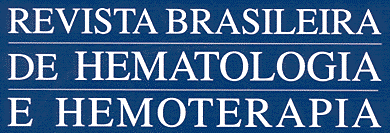Resumo em Português:
As leucemias agudas são doenças com alta morbimortalidade para as quais o transplante alogênico de medula óssea é uma opção terapêutica eficaz. Neste artigo, relatamos a experiência de um centro brasileiro com pacientes apresentando leucemia aguda que receberam um enxerto de medula óssea ou células-tronco periféricas de um doador familiar HLA idêntico no período de julho de 1995 a dezembro de 2005. Foi realizado um estudo de coorte retrospectivo, analisando dados de 125 pacientes com mediana de idade de 28,7 anos. Oitenta e um pacientes (64,8%) apresentavam leucemia mieloide aguda; 38 (30,4%), leucemia linfoide aguda; e seis (4,8%), leucemia bifenotípica. Trinta e dois pacientes encontravam-se em primeira remissão completa, 23 em segunda remissão e 70 com doença avançada (refratários, recidivados ou além da segunda remissão). A sobrevida global estimada em 10 anos foi de 22,9%. Em relação à situação clínica do paciente no momento do transplante, a sobrevida global em dez anos foi de 56,3% para pacientes em primeira remissão, 38% para os pacientes em segunda remissão, e 3,7% para os pacientes com doença avançada. Considerando-se os pacientes transplantados em primeira e segunda remissão, a evolução foi semelhante aos dados disponíveis na literatura. Entretanto, os resultados dos pacientes transplantados em fase avançada foram ruins, devendo-se discutir o papel do transplante para este grupo.
Resumo em Inglês:
Acute leukemias are a group of diseases with high morbimortality. Allogeneic bone marrow transplantation is an efficacious therapeutic option for their treatment. We report the experience of a Brazilian center in respect to acute leukemia patients who received a bone marrow or peripheral blood allograft from a HLA-matched sibling from July 1995 to December 2005. Data were retrospectively collected. The median age of the 125 patients included in the study was 28.7 years. Eighty-one patients presented with acute myeloid leukemia, 38 with acute lymphocytic leukemia and six patients with biphenotypic leukemia. Thirty-two patients were in first complete remission, while 23 were in second remission and 70 were transplanted in an advanced disease stage (refractory, relapsed, or beyond second remission). Overall expected survival at 10 years was 22.9%; the expected survival was 56.3%, 38%, and 3.7% for patients in first remission, second remission and for patients with advanced disease, respectively. In conclusion, the evolution of patients transplanted in first or second remission was similar to other published studies. On the contrary, patients with advanced disease showed a dismal prognosis. The role of allogeneic transplantation in this group of patients should be further discussed.
